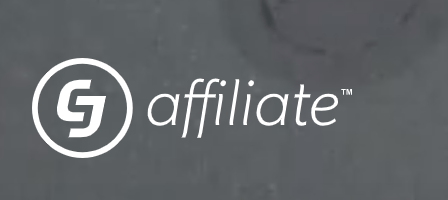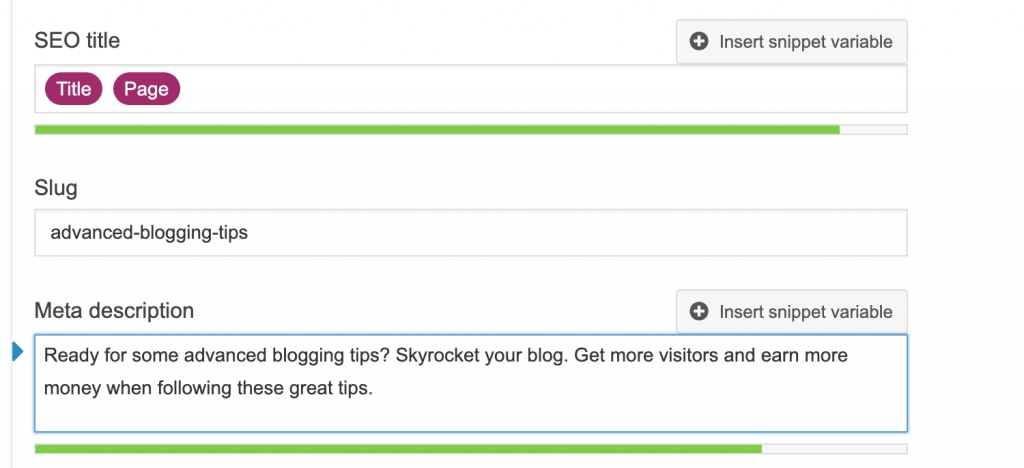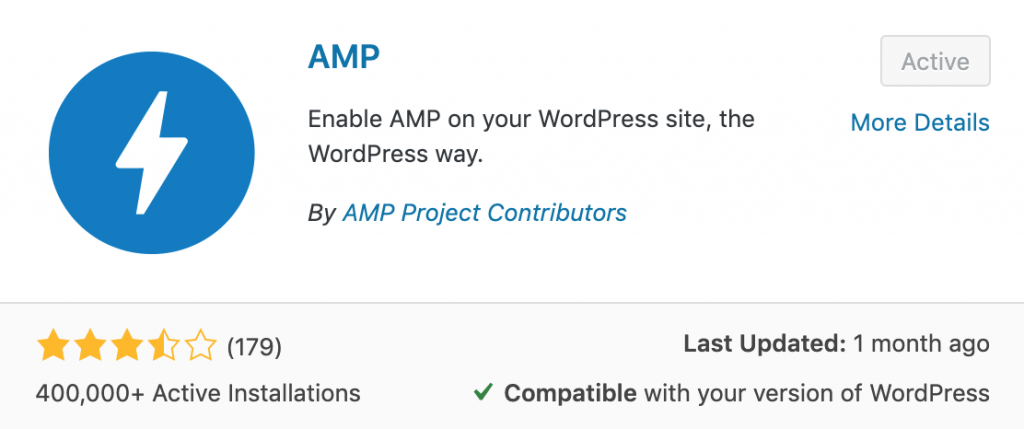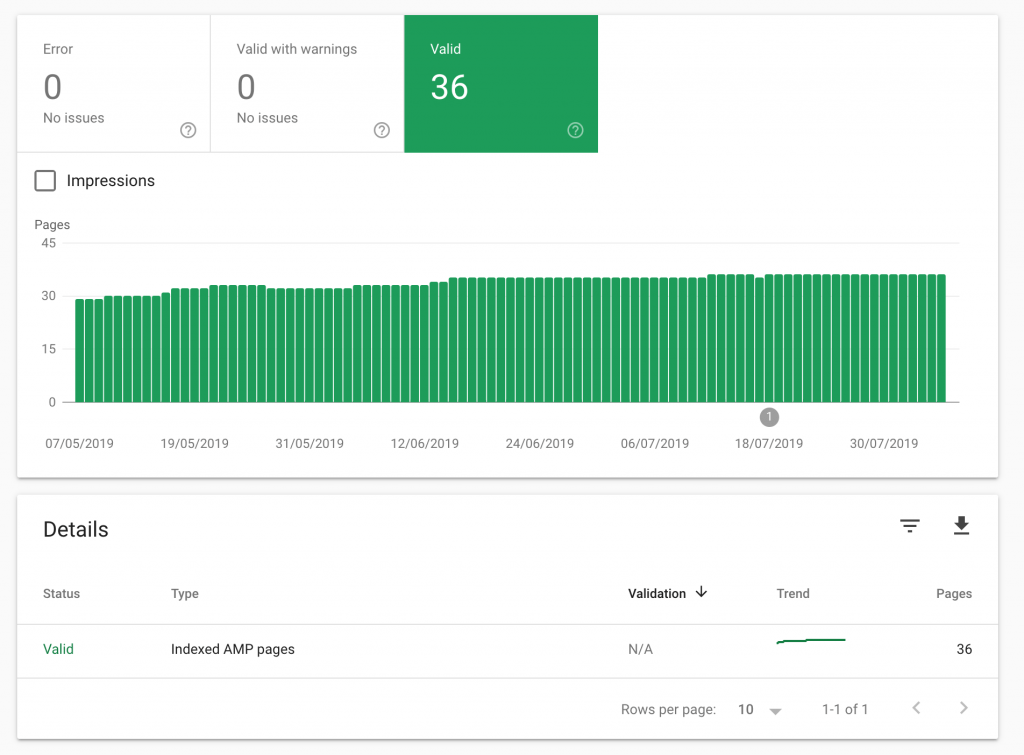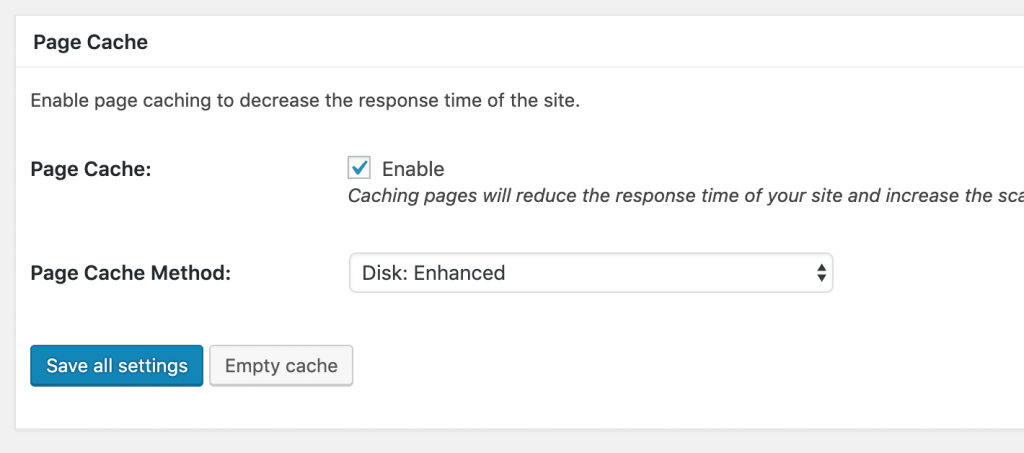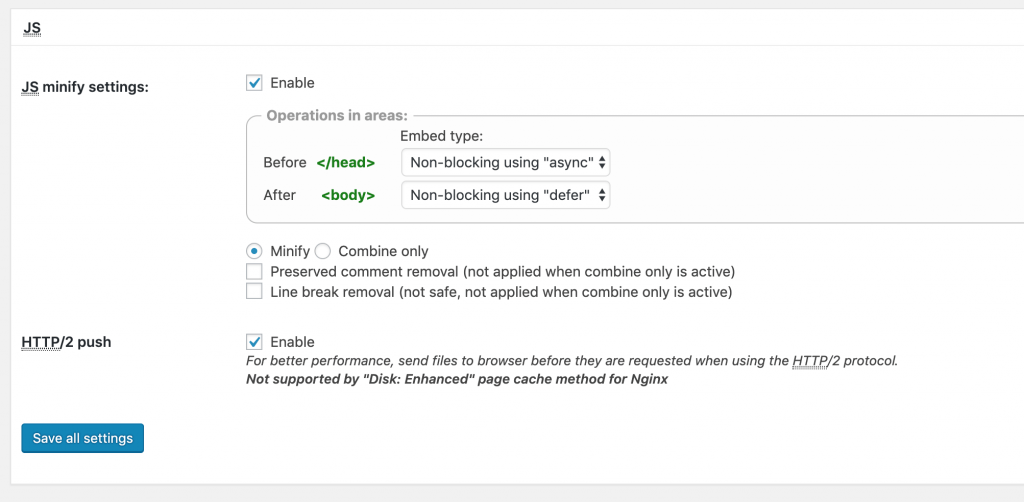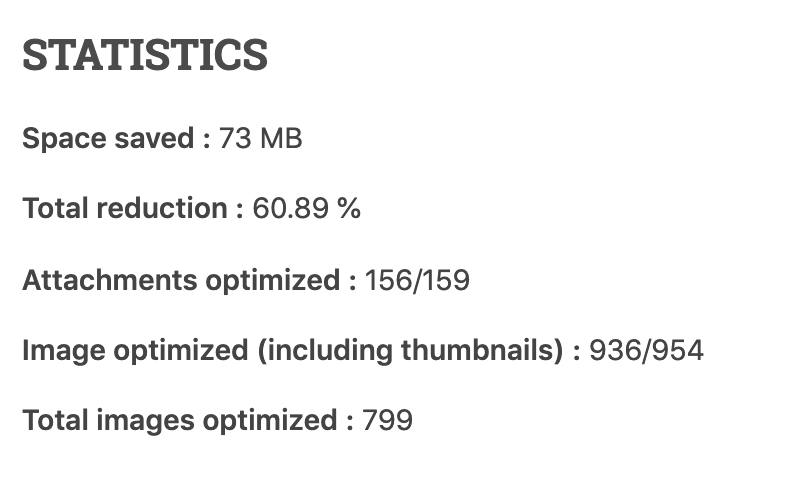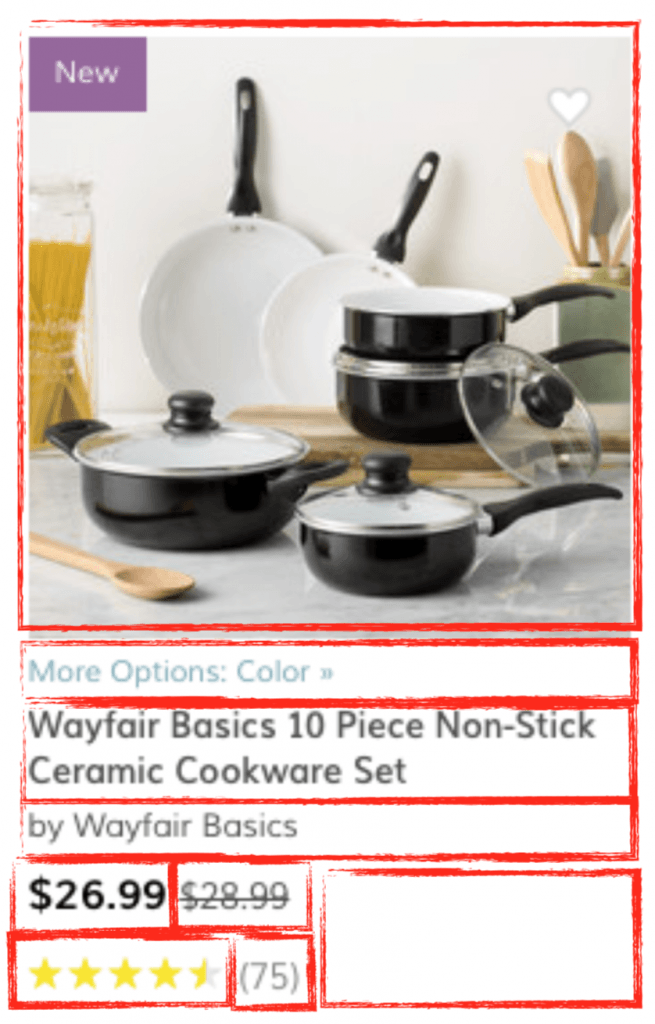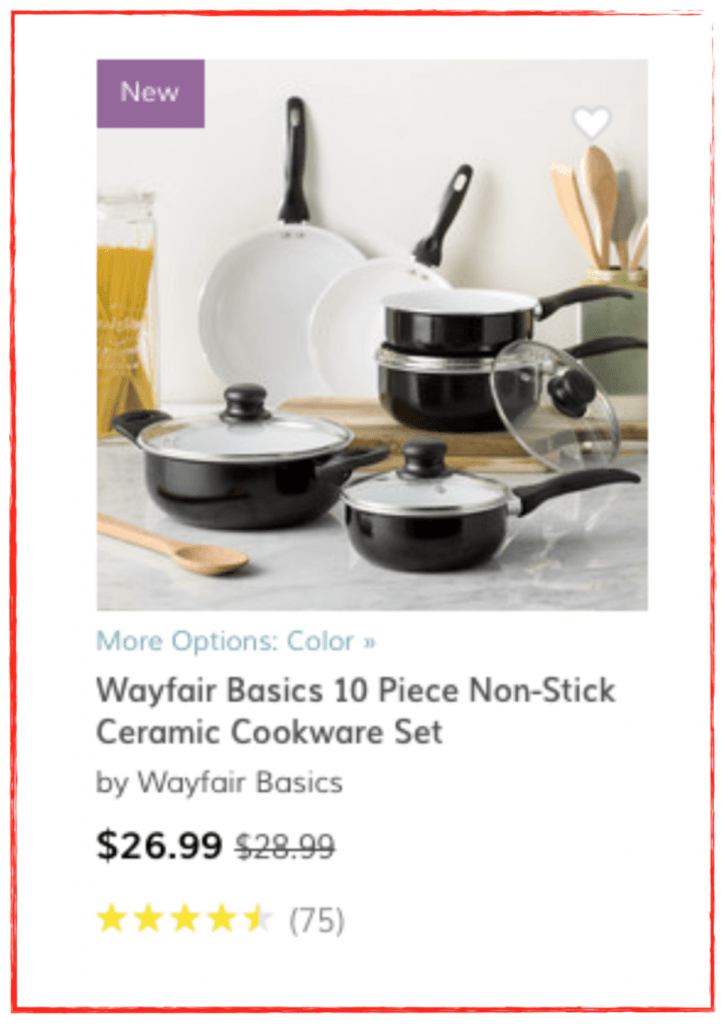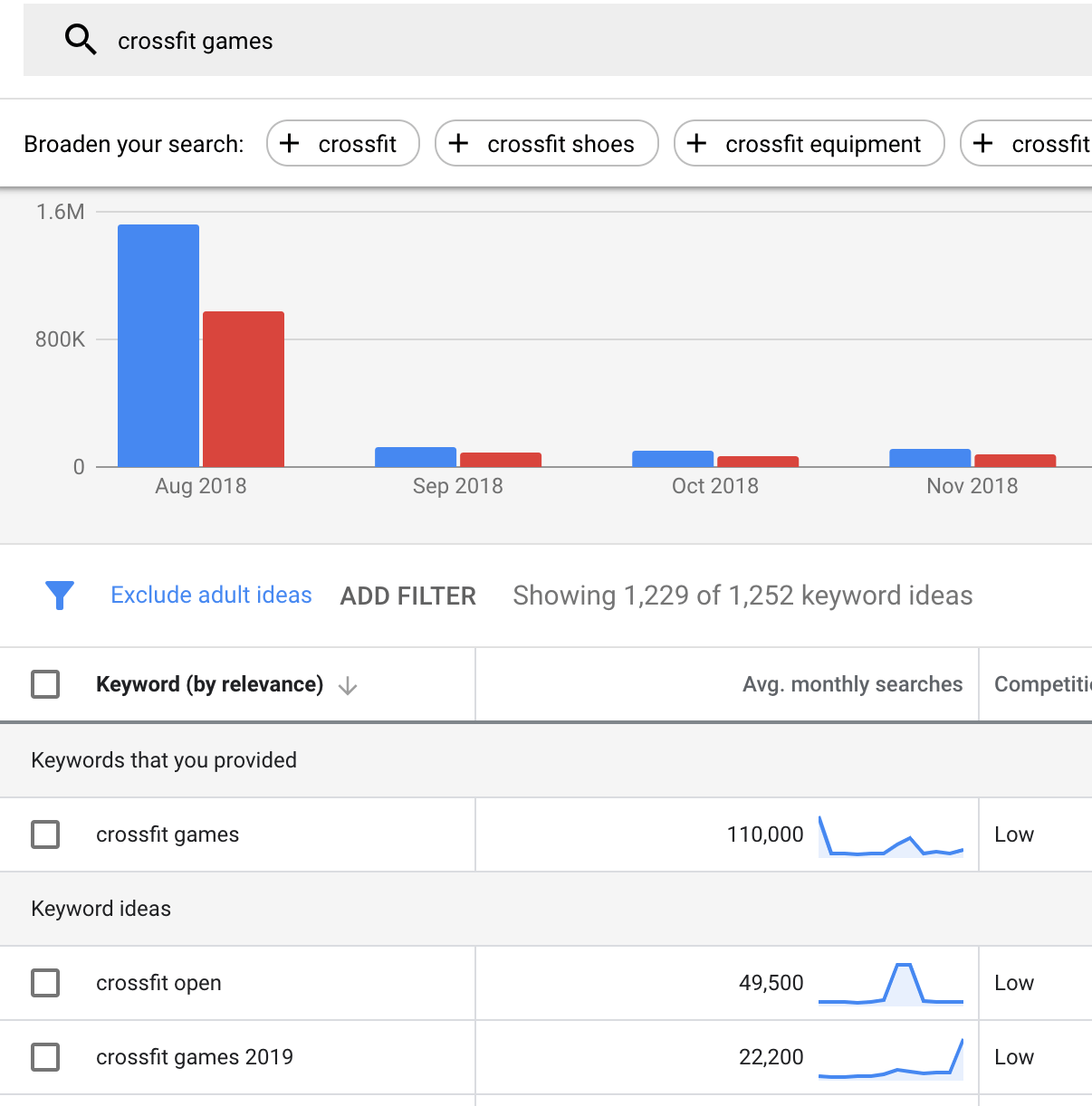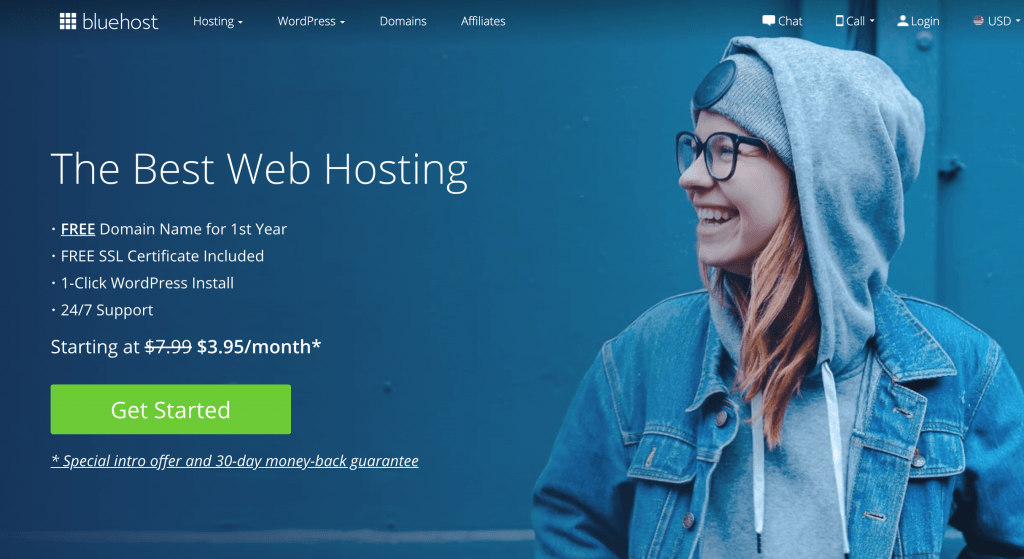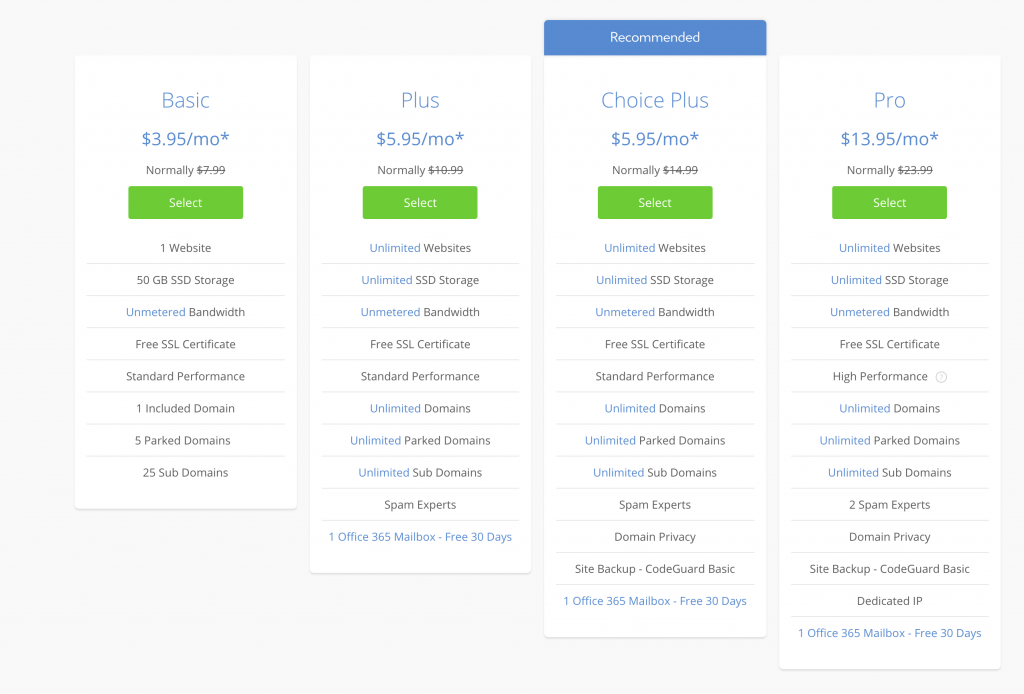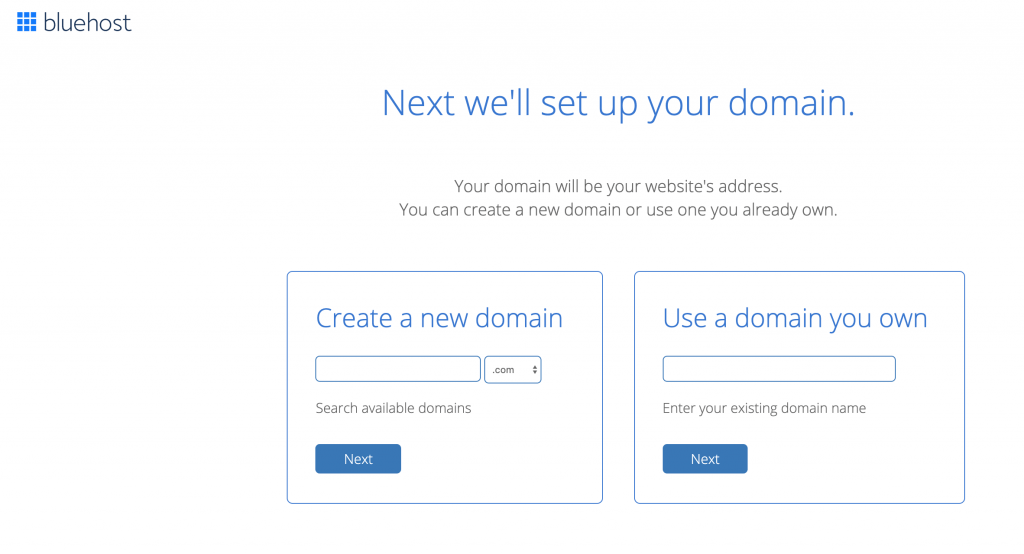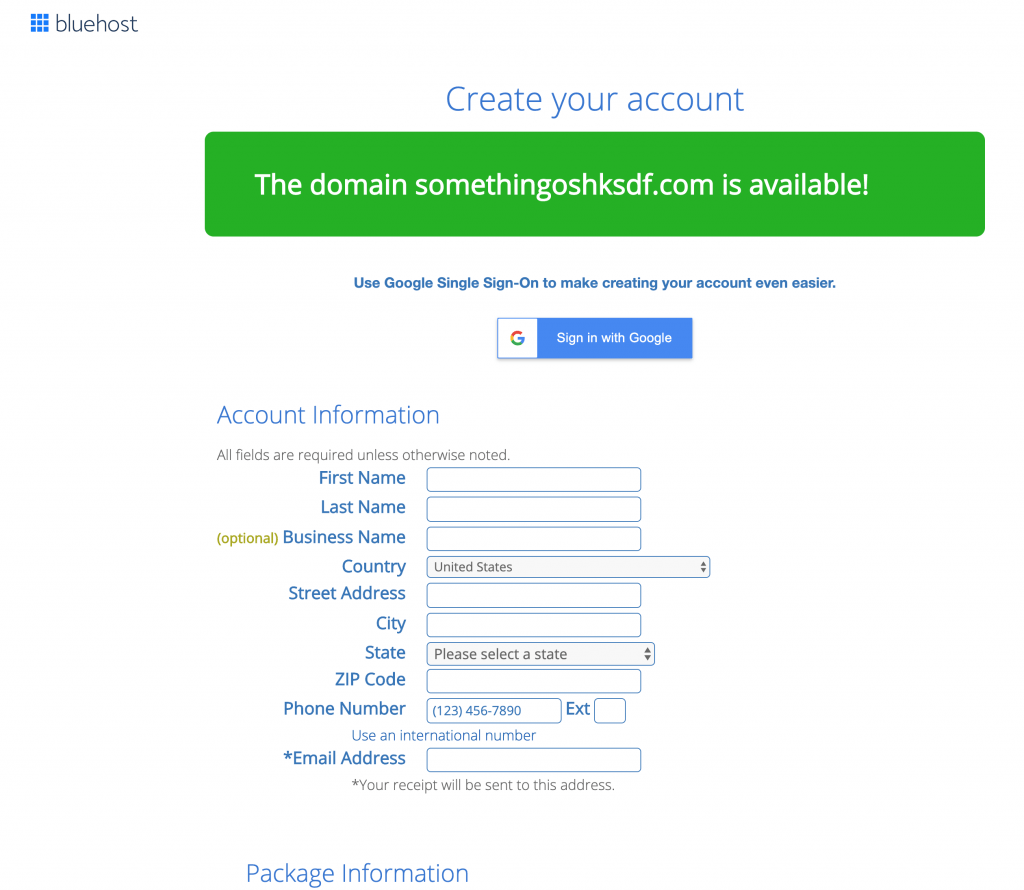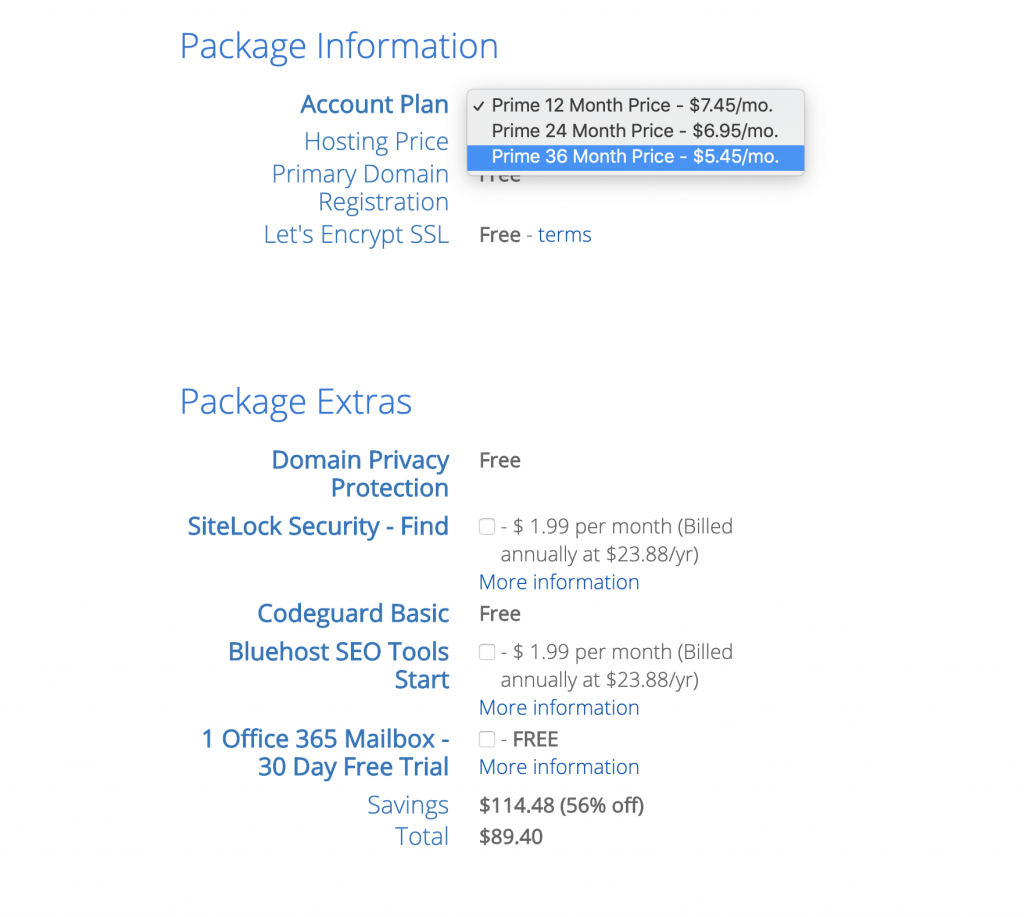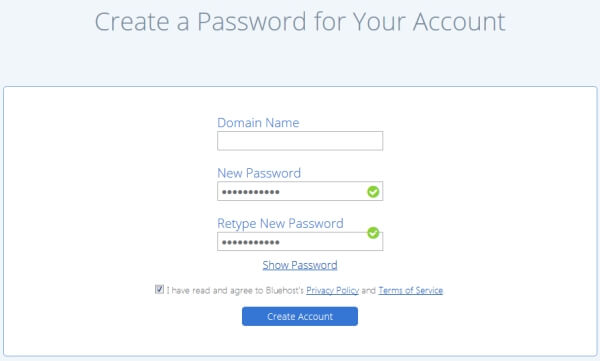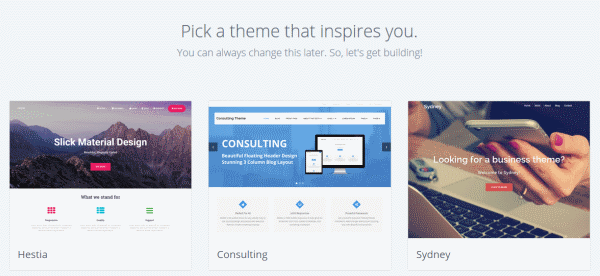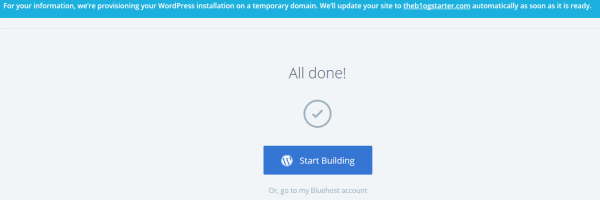Everyone with a blogging is doing affiliate marketing. But not a lot of people with a blog are doing it right! In this post I’m gonna show you how to do it and how NOT to do it. This is living document for me. From time to time I’ll add examples from blogs who’re doing a great job and who’re doing a lousy job.
The basics about affiliate marketing
Amazon is making more money from other people selling on their platform than they are making themselves with their own products. It’s the most basic form of affiliate marketing. They actually just refer traffic to themselves but by doing it there profit margin goes through the roof because of the network effect. The more products Amazon has the more likely people are to buy stuff there and the more likely they are to buy more products in the same order. The common road to affiliate marketing is referring traffic to someone else and earning a commission for every sale or lead from the visitor you sent.
If you have a blog you can sell your own product. A course, an ebook, another digital download, or even real life things you can ship via mail. Before you can sell something you made, you have to create it, install a service through which you’ll sell it (e-commerce storefront), start customer support, add a payment provider, etc. etc.
With affiliate marketing you have non of that. You simply add a link to your website which has your unique referrer code attached to it and when someone buys something via your link you get a commission.
You don’t have to do any support, no payment processing, nothing. The downside is, is that you’re not building your own customer base and you have to keep getting more clients who want the same thing over and over again. So in order for affiliate marketing to be interesting for you, you need quite a big audience and a lot of different advertisers.
How do I start with affiliate marketing?
Register an account at your local affiliate marketing network. If you Google it (in your local language) you’ll get the top networks. For the US, Canada and probably the UK your best bet is CJ.com. Commission Junction is the biggest of them all. The benefit of using the biggest? You only have to signup once to a platform and you’re able to apply your website to all the different advertisers they have on their platform.
Once you’ve signed up go to the advertisers tab. You’ll get a huge list of thousands of active advertisers which you can signup to.
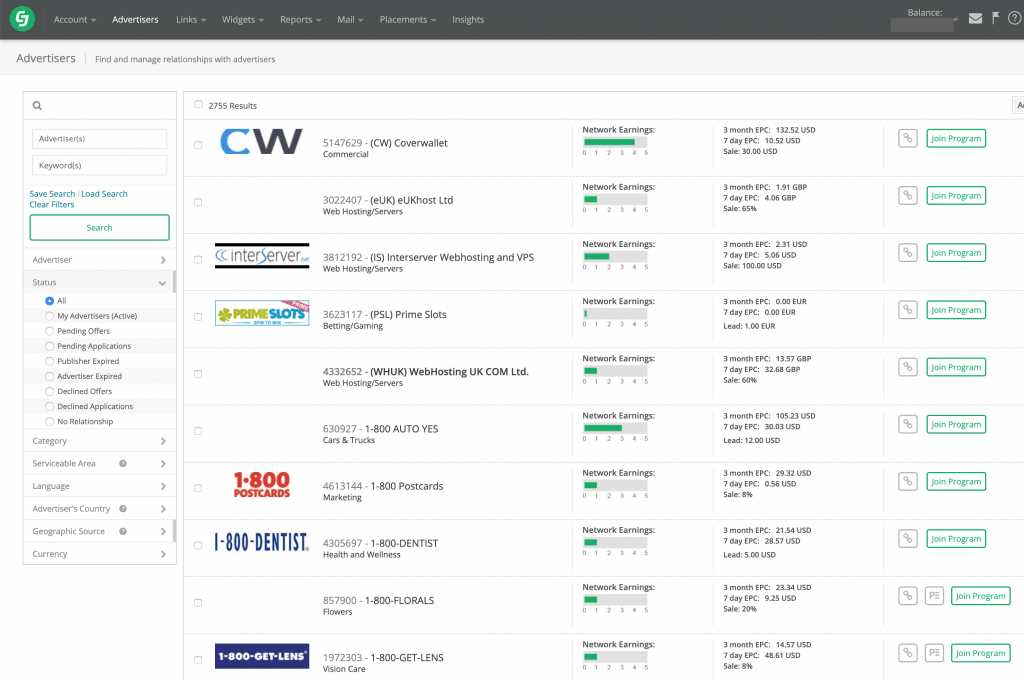
Now… I don’t know all the advertisers in my niches. So I usually use the category filter to narrow down my search and get to the most interesting advertisers fast. There’s another reason why you want to look for advertisers that match your niche. You might wanna work with a certain advertiser, but they also get to chose who they work with. So if you don’t want to waste any time signing up to programmes you’ll get rejected from, better start making a selection based on what fits your blog.
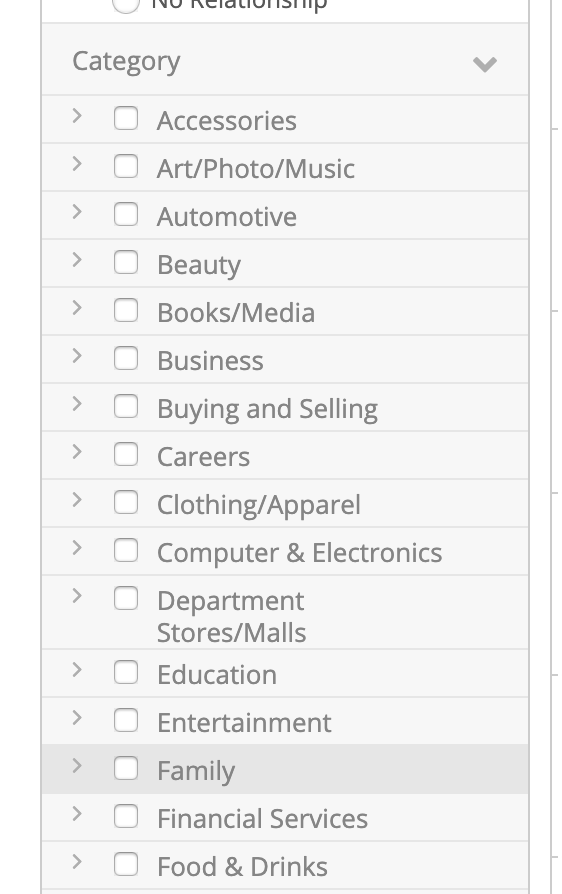
Once you find some programmes that fit your niche, you can apply to them. Don’t take too much notice on the network earnings or the earnings per click at first. Look at how you can “connect” with this advertiser. Look at the programmes. What are they rewarding you for? Sales? Leads? Go to their websites. Would you signup / buy anything from them? Would your readers? Only then look at what the earnings per click can be.
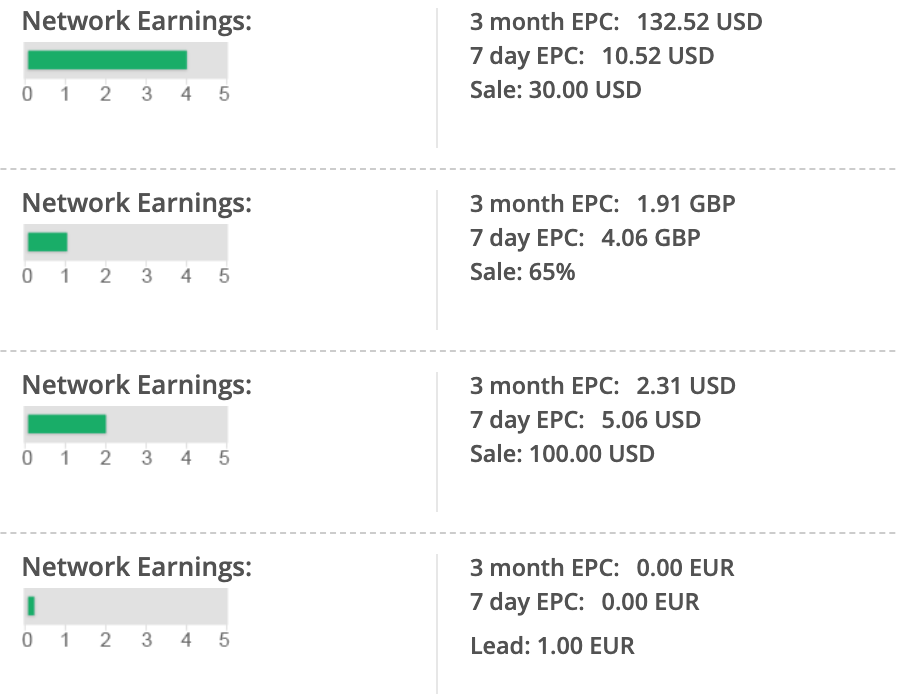
I usually signup to programmes that compensate me both for sales and leads. If you’re only being compensated for leads, you know you’re not getting the full piece of the pie. Don’t get overly excited about 100 dollar sales commissions. Those are usually hard to get. As in: you need a lot of clicks to get to that sale and you need a lot of good quality content to get people as far as that they want to buy from that affiliate. After going through the programmes, analyzing where you get good earnings per click (says more than earnings per sale) only than apply to programmes.
Once you’ve applied, always send a message to accompany your application. I’ve run numerous affiliate marketing campaigns for top advertisers. The kind that spend millions a year on affiliate programmes. I can tell you first hand that 99% of affiliates don’t send a “Hello I love your brand and would be happy to promote you” message. The ones that do will immediately stand out. And it’s the start of building a relationship. We’ll come back to the relationship part later.
Probably the easiest way to start making money is just to signup for the Amazon Affiliate programme Amazon Associates. There is SO MUCH to write about because there are so many products on Amazon.
What’s good content to monetize affiliate marketing with?
You have a lot of different methods of creating content for affiliate marketing. We’ll go through them one by one.
- Roundups
- Tutorials
- Comparisons
- DIY / how to create something
- Reviews
- Resource pages
1. Roundups
This can basically be a post where you talk about the “10 best items to pack when you go backpacking” kind of post. You list a number of items of which you think they’re great to bring a long. you mention why this product is best or better than something else people could choose.
Make mini reviews of all the items you’re mentioning. Here’s where the tricky part comes in… You SHOULD have tried all the products you’re promoting in your blog. Why could you else tell someone else what to buy? If you haven’t or you’re missing a few products and still need a few more items to complete your post, use what you can find on Amazon. Read through the reviews. Don’t copy them one on one. Always make your own content. It’s fine to occasionally use a snippet of text from Amazon (or any other website) but make sure you write 99% of the content yourself.
2. Tutorials
If you have knowledge about something, use it to create tutorials other people will follow. Explain how a software tool works. Walk through the programme. Record a video. Answer questions about the product.
Who doesn’t know the most famous tutorials (can you call em tutorials?) of them all: Will it Blend!! The put anything you can imagine in there. An iPhone, a Torch a computer game. Etc. Etc. They were actually telling how the blender is working and how good it is as a blending tool. What better tutorial than to show people what crazy stuff it can blend?

3. Comparisons
Is product X better than product Y? What are the benefits of the one compared to the other? What do the experts say? What do the user reviews say?
If people are searching for product x vs product y, you know they are very close to buying. They’re not considering anything else anymore. Just these 2 products. Not a different vertical. This is probably the final hurdle to take before they’ll make the purchase. You’re the one to push them over the (positive) edge and help them buy. The great thing is that their purchase is just one click, your click!, away!
4. DIY / How to create something
Smoothies, home improvement, make-up, … Anything that can be created can be presented. Share your knowledge. Give people in depth articles on how to create things. Show them step by step how they can create that wonderful thing you made. You can link out (with affiliate links) to the websites where you bought the “ingredients” to create your project.
This is probably one of the most natural ways of doing affiliate network. Because here you’re creating new content. Giving real value to people. And that’s what affiliate marketing is all about. Add something on top of what the advertiser is already doing with a product. Show your audience how you can make something better. How they can create something out of nothing.
5. Reviews
This also works well for all sorts of verticals. Travel destinations for example are often reviewed. From the start to your trip to getting back home. Every step of the way can be reviewed.
How easy is it to purchase a travel package at advertiser X? How did all the itinerary get in your mail box / on your phone. How were you informed about your destination? Did you get a weather update? What to pack? How friendly was the staff at the hotel / the host at the AirBnB? How did you enjoy the destination? Did you get any travel tips while you were there?
You can review the entire trip. You’ll not only entice people to book at a certain travel agent. you’ll also be endorsing a certain destination. It gives all sorts of ways to add affiliate links in your story. What to pack is a big one. The holiday package of course. Travel insurance. Photo app / album. Car rental? Etc. Etc.
6. Resource pages
People are always interested in what you’re (as a blogger) using as tools. How do you get your website traffic? What makes your life easier? The resource page is a great way to share your knowledge about what you use and why you use it. The links can easily be affiliate marketing links. If people see you’re successfully using a tool, they’ll also want to use it.
This entire blog is actually one big resource page. This blog should provide you with a unique view on how to do things. I’m showing you what works and I link out to resources that I use. Most of the links are not tagged with an affiliate code. Some are.
What are common mistakes people make with affiliate marketing?
- Using copied content from advertisers (or someone else’s posts)
- Making posts that ONLY contain affiliate links
- Only using the supplied feed from an advertiser
- Sticking to one type of content
- Too little negotiating with advertisers
- Never contacting advertisers
- Buying stuff through your own affiliate links
1. Using copied content from advertisers (or someone else’s posts)
Do you like to read the same article or book twice? Some yes, most no. It’s the same with your readers. But especially search engines hate copied (duplicate) content. Machines spin out content at an alarming rate. Right now up to a third of some news websites’ content is automated. Machines are creating more and more content. And that’s fine for basic news stories like earthquake reports. It’s always the same. A Rigter scale number. A location. A time. Casualty and injury report. Some content to get to a few hundred words and voila. Another piece of content has been written created.
If you want real engagement and content that really moves your audience, you can’t leave that to a robot (yet). Search engines also want to give credit to the original editor of a piece. It would be rather strange that I could rank higher for a piece of content I copied literally from another blog. (It does sometimes happen). But that has to do with the authority your website has. If you post something on your own blog and days later post it on WSJ.com you’ll be outranked by the duplicate content. Normally that’s not the case.
2. Making posts that ONLY contain affiliate links
If your websites’ only goal is to make money by linking out via an affiliate link you’ll get slapped by Google. There are actually ways to bypass Google’s algorithm so it doesn’t spot your links as being affiliate links. But it’s better to deliver real value. And delivering value to your audience usually means you link out to other sources besides the ones that feed your mouth.
This type of mistake is usually accompanied with “thin pages”. Webpages with very little content. 100 – 300 words. No picture. Just a small (sometimes even copied) piece of text from your advertiser and 1 link to the advertisers’ website. Done. That’s not creating value on the web. That’s just you being a serving hatch.
3. Only using the supplied feed from an advertiser
This one relates to tip 1 and 2 as well. There are still massive amounts of websites that only copy a feed from an advertiser to their website. A feed is basically a long list of information about the products an advertisers has to offer. The only thing the affiliate does is upload the feed to their website and being the serving hatch again.
Just passing along traffic as quickly as possible. Very low time on site. A little more than 1 pageview per visit. Extremely low quality. They usually try to outrank the advertiser on certain categories. They buy a domain. Add a little bit of content. Upload the feed. Buy a 100 paid links. SPAM some other links and they’re done. This is a bad and short term tactic. There are 1000’s of PhD students working at search engines trying to sift out this kind of garbage. You will het “caught” and end up on the bottom of the search engine.
4. Sticking to one type of content
About 5 years back I had website that was an aggregator for coupon codes to get discounts on photo albums. The only thing I did was create a post (also thin posts that only linked out to the advertiser) wrote down the new code in a short piece of content and be done with it. That worked great for a few years. I earned at least 30k with it.
But I should have evolved. I should have compared the different photo albums from the different suppliers. I should have ordered my own albums and reviewed the quality. I should have made a yearly: This is the best valued photo album of 2019. Etc.
This strategy relies entirely of you ranking on a few really important keywords. Once Google figures you out they scrap you from the top positions (because you’re not providing enough value) and the domain dies.
Besides the fact that you’re relying on one type of content you also don’t want to rely on one type of traffic channel. You have to diversify your traffic channels too. When my photo album website ranked high and got a lot of traffic I added the opportunity to receive the coupon codes in a newsletter. This did 2 things: I got less hooked on Google’s traffic. I was building my own audience in stead of being addicted / dependent on Google. I also gave more value to my visitors. They didn’t have to come looking for coupon codes. I sent them straight to their inboxes.
5. Too little negotiating with advertisers
When you’re a small fish, if you get a few sales every month, it’s no use negotiating with advertisers. But once you get up to 100 sales a month it’s time to start negotiating with advertisers to get a bigger slice of the pie.
You can go about this in 2 ways. I prefer the first route. You can either contact the campaign manager from the affiliate network or you can contact the advertisers’ campaign manager directly. I like to talk to the campaign manager from the network. He can act as a buffer to the advertiser.
Ask the campaign manager if there are any options of getting “different” compensation deals from the advertisers. Tell them you’re able to send more traffic and create more sales volume if you have a little more room in your margins.
The best thing would be if you could say well… if I get 2% more commission I’ll be able to send 6% more traffic / sales. If you know your numbers and what you’re spending on your campaigns in order to get the traffic and sales for your advertisers you can probably make a pretty good guestimate how much extra volume you can give the advertiser.
The campaign manager can always tell you that you’re not in the right position yet to negotiate these kinds of deals yet. They’re always looking for extra traffic for their advertisers as well. So there’s an incentive for them to try to find a workable solution. For every dollar that the advertiser makes through the network they earn anywhere from 1% – 20%. So the more revenue you gain, the more revenue they gain.
You have to be a bit more careful if you contact the advertiser directly. Tell the advertiser you’re really happy with the campaign. That you’re putting a lot of effort in the campaign and that you hope they’ll stay for a long time. Tell them you have a few ideas to increase revenue. Don’t talk about higher commissions yet. Only when you’ve established a better relationship with an advertiser should you be asking for more money. Usually they even suggest it themselves. “If we increase your commission how much more sales can you deliver?” The campaign manager from the advertiser also has to show that their channel is growing and that they’re at least on par with revenue growth from other channels.
If you’re a big fish, eventually you’ll just be introduced directly to the advertiser by the networks’ campaign manager. Active advertisers have campaign managers who’re on the lookout for affiliates who give a lot of value to the campaign. They invite you to events and invite you to their HQ to talk about how the campaign can be improved even more. Ask what you need to generate more revenue for the both of you.
6. Never contacting advertisers
Always, even if you’re a small fish, contact an advertiser. Especially unknown advertisers. They’re small too. You don’t know how big your piece of their entire affiliate pie you’re delivering. You might be one of their bigger fish. Having a direct contact with the advertiser gets you a leg up. You might hear about upcoming events or sales before others do. They might checkout your website and suggest a few changes that worked on their site or on other affiliates’ sites. This is also a way to build a relationship so in the end you can increase your earnings. Build trust and show them you’re willing to do the extra mile by promoting their campaign.
7. Buying stuff through your own affiliate links
It’s usually not allowed to do it for one. It’s a bit the same as clicking on your own ads. They will find out and you will get booted off the platform. Don’t think you’re smarter than everyone else. Incognito surfing. Via a Proxy. You also can’t ask your friends and family to do the same. Focus on providing value to your reader and you will earn money through affiliate marketing.
How much can you earn with affiliate marketing?
I’d say: the sky is the limit. Of the fact that you don’t want to riddle your blog with affiliate links. The most important thing you need to remember if you want to earn money with affiliate marketing: create value for your audience.
Without value no affiliate income or only for a short while. You’ll be overtaken by others in search engines because if you focus on value you will rise above the tide / rest.
I would even say: don’t add any affiliate links until you reach sizeable audience / value. Learn how to write first. Learn how to present first. Learn how to record good video first. My guess is that your most important readers (your early adopters) know what affiliate marketing is. So they also now when they are actually the product. You need these people! They have to tell their friends (on- and offline) about your blog. You have to keep them happy. First deliver them value then add monetization.
How much does it cost to start affiliate marketing?
Nothing. You can register for free at any affiliate marketing network. It’s gonna cost you time to build your blog of course. And yes you need some hosting and a domain name but other that that, you don’t need to spend a dime.
Create value and they will should come. Most people who do affiliate marketing try to rank their blog on Google and get free traffic from the organic results. They then add a Facebook page so they can communicate more directly to their following. Start a Pinterest Board. Instagram. Twitter. Add a newsletter. As many different channels as you can manage and as many as you can keep relevant for your audience.
You can optimize those channels until infinity and still be able to squeeze more out of them. But if you are just starting out or want extra revenue without losing time, you can start advertising. Advertising costs money.
Not all affiliate advertisers allow you to advertise their campaigns. For many reasons. The most important being: they’ll have another competitor in the already crowded advertising space. You’ll start bidding on the same keywords. Driving up click prices. Only Google wins with that strategy. Some advertisers don’t use Search Ads. They might not have the money or the resources to manage a campaign. If they don’t use it themselves, they usually leave room for the affiliates to start their own campaigns.
The game of advertising for an affiliate campaign is all about measuring. It’s a really thin line between profit and loss. Your margins are really slow. Most of the time you have to let the visitors land on your website first before you can “send” them to the advertiser. That’s already gonna cost you 50% of the visitors that didn’t already bounce. You’ll probably be able to send a maximum of 25% of the bought traffic to your advertisers’ site. That means you have to take into account a huge gap between clicks and actual visitors. Secondly you need to take into account the advertisers’ conversion rate. That’s usually not much higher than 2% – 3%. So you’ll end up with a 0.5% conversion rate at most. Doing a little more math will calculate what you can pay per click in order to make a profit. It won’t be a lot.
A better way is to start a remarketing list based on your websites’ visitors. Add them to a Google Ads Audience. If “your” audience is searching for the product or service from your advertiser than the conversion rate will be much higher. Click prices will be a lot lower for you, because these users already know you. They’re more likely to click on one of your ads. You’ll get a higher CTR (Click through rate) compared to other advertisers and that usually means you’ll be paying less per click. Making it more profitable for you.
I’ll write another blog or add another big piece of content to this piece for social media advertising and affiliate marketing. There’s also a world to win and there are a lot of neet strategies you can follow to gain more affiliate revenue.
What do I need before I can start with affiliate marketing?
Value. There are millions of websites out there. Why would people come to yours? What are you doing better than the advertiser you’re writing about? What is he not telling / saying / producing (video) that you are?
Start a blog. You can read my post about how to start a profitable blog. That should get you on the right track to starting a website that can turn out a profit with affiliate marketing.
Use WordPress. There are millions of plugins you can use that make your life as a blogger a lot easier.
Make sure you have an interest in what you’re writing about / promoting. If you only care about the money, you’ll fail or have a miserable time doing it.
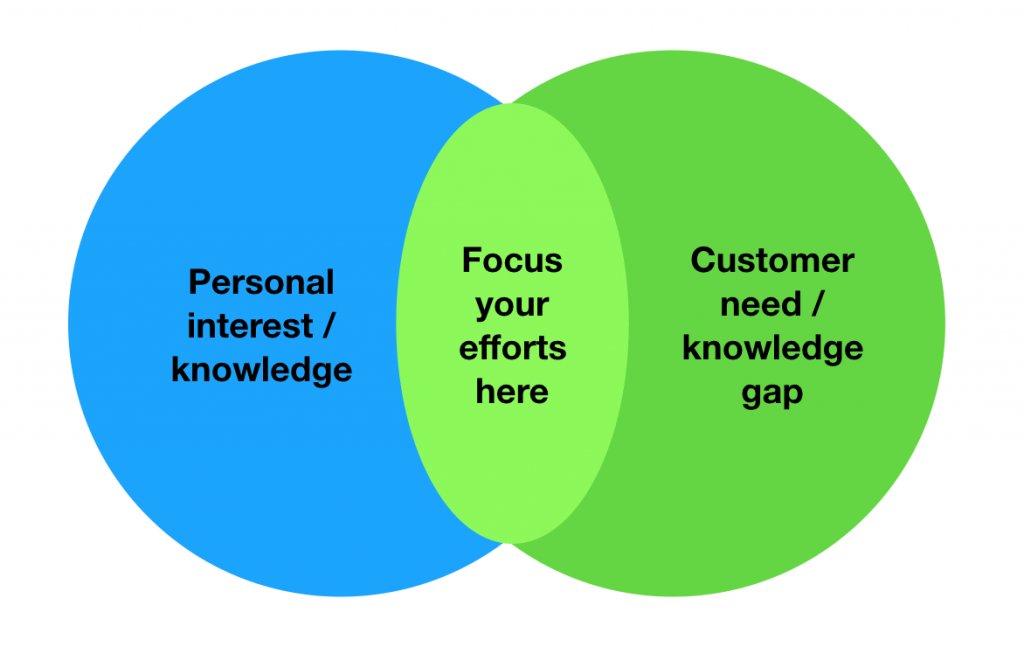
Make sure you have a relevant domain in a niche that’s not too broad and not too narrow. In the same blog post I just mentioned, there’s a step by step guide to figure out a domain name and a good niche.
How does affiliate marketing work?
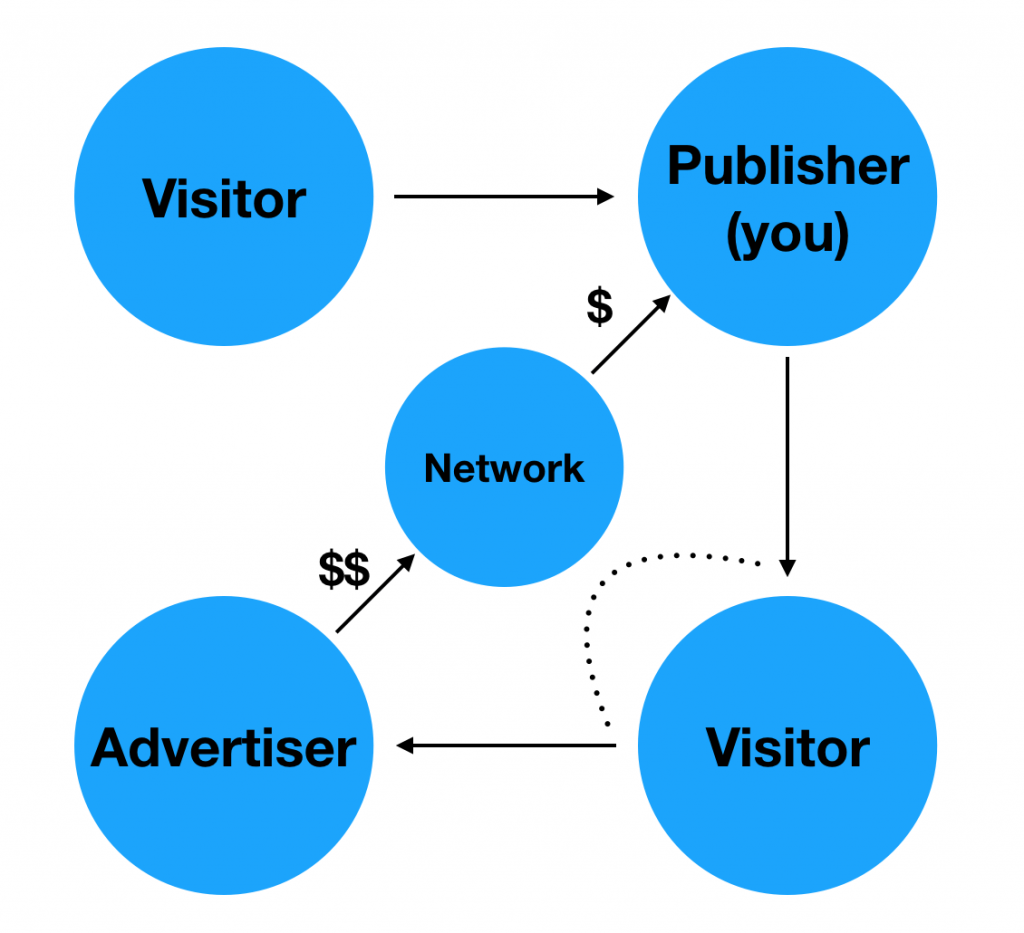
There are 4 parties involved in affiliate marketing.
- You / The publisher
- The visitor
- The affiliate network
- The advertiser
Visitors will come to your website. You’re the publisher. You publish content in any way or form and that should attract visitors. If you place affiliate links on your blog the visitors might click on those links and be sent to the advertiser. Before they land on the advertisers’ site they get routed through the affiliate network. That way the network knows who sent the traffic to the advertiser. Advertiser, publisher and network will all see their part in the reports. You’ll see that you sent X amount of traffic to advertise Y.
If one of the visitors you sent to the advertiser makes a purchase within a certain time frame you’ll get a commission through the network. The advertiser will pay the network a lump sum. They’ll pay for networking and hosting fees and for commissions. A part of the commission fees will go back to you. If you get $100 per sale the advertiser will probably pay anywhere from $101 – $125 to the network.
The timeframe here is also an important part of the equation. Normally advertisers will say: well if your visitors buy from us within 30 days after you sent them over we’ll consider it your effort and will pay a commission. This is called cookie time. The bigger the advertiser the more well known the brand the less time you’ll have before the traffic you sent becomes worthless.
Amazon is so well known, their website converts so well… They have a 24 hour cookie time. So if your visitor doesn’t convert within 24 hours you won’t get paid anything.
